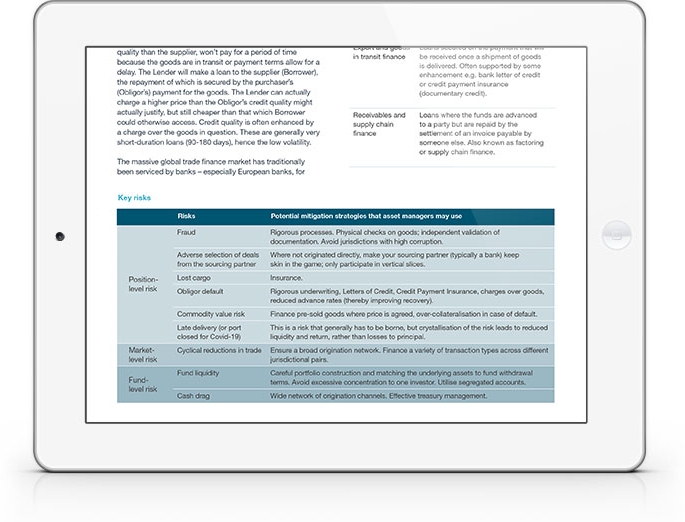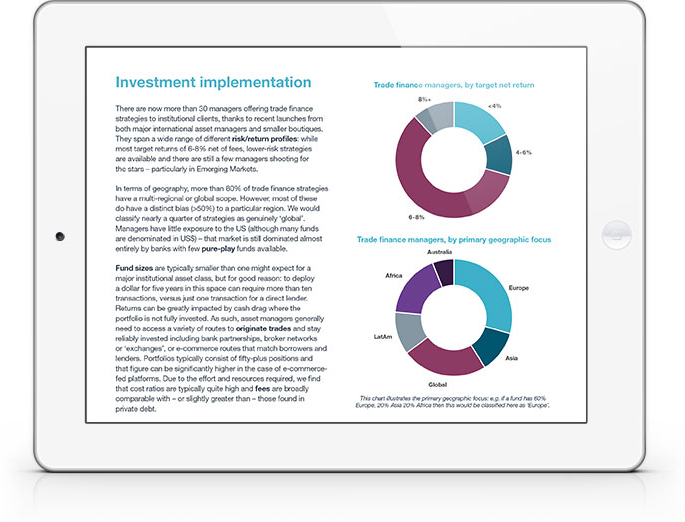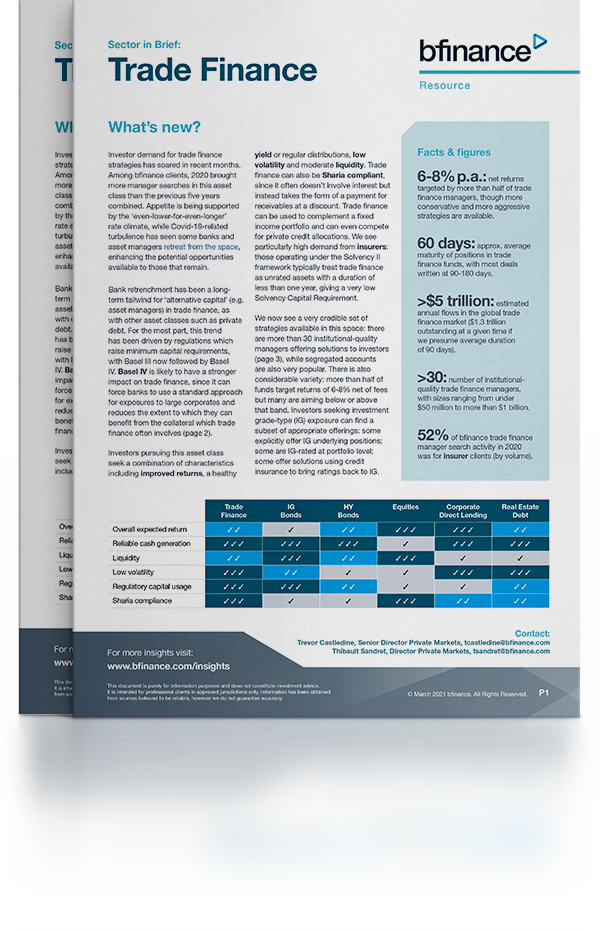
IN THIS PAPER
Understanding the asset class: key characteristics of trade finance investment include reliable cash generation, moderate liquidity and low volatility. Insurers have shown particularly strong appetite due to the low Solvency Capital Requirements involved, while Islamic investors are attracted by Sharia compliance. The article presents main categories of trade finance investment as well as key risks to manage at position level, market level and fund level.
Investment implementation and manager selection: a review of the 30+ managers now offering trade finance strategies to institutional clients, ranging from conservative investment grade-type strategies targeting net returns of <4% to more aggressive approaches seeking >10%. With cash drag presenting a key risk, investors must scrutinise origination capabilities with care. Segregated accounts are particularly popular, addressing potential liquidity issues and even ESG challenges.
What’s new? Ongoing bank retrenchment and Basel IV will continue to benefit alternative lenders, while Covid-19 turbulence has pushed notable players out of the market – enhancing the potential opportunities for those that remain.

WHY DOWNLOAD?
On the face of it, trade finance – which can be viewed as an alternative to either liquid fixed income or private debt – is an extremely attractive strategy. It is nearly as liquid as bonds, with redemptions typically allowed on a quarterly basis although shorter terms can be negotiated for an SMA. Yet it offers much lower volatility and generates higher returns when compared to investments of similar credit quality (yield pickup of ~100bps at the investment grade end of the spectrum) and a low annualised loss rate.
It is, however, vital to be cautious with implementation: although returns are attractive, they are not high enough to tolerate meaningful losses or significant cash drag arising from inefficient capital deployment.
Important Notices
This commentary is for institutional investors classified as Professional Clients as per FCA handbook rules COBS 3.5R. It does not constitute investment research, a financial promotion or a recommendation of any instrument, strategy or provider. The accuracy of information obtained from third parties has not been independently verified. Opinions not guarantees: the findings and opinions expressed herein are the intellectual property of bfinance and are subject to change; they are not intended to convey any guarantees as to the future performance of the investment products, asset classes, or capital markets discussed. The value of investments can go down as well as up.


 English (Global)
English (Global)  Français (France)
Français (France)  Italiano (Italia)
Italiano (Italia)  Dutch (Nederlands)
Dutch (Nederlands)  English (United States)
English (United States)  English (Canada)
English (Canada)  French (Canada)
French (Canada) 

